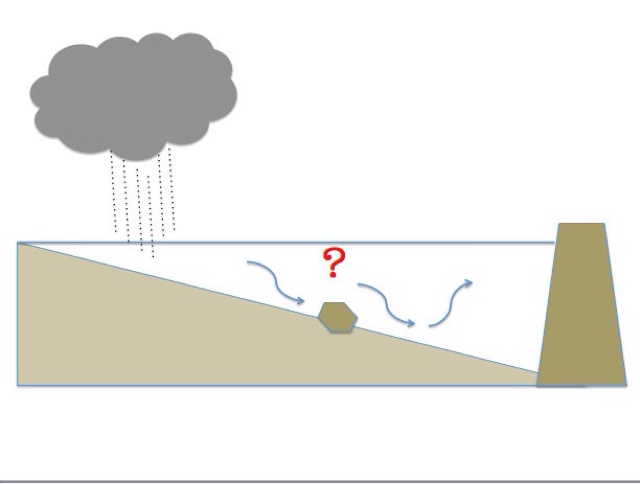Next week at this time I'll be presenting a lecture to students at the Agricultural Division at Rajarata University. Some of those students will be joining me over the following days to explore dry tank beds in their neighborhood.
The "tanks" are human made lakes that act as reservoirs. They are used primarily for irrigating the rice crops but they have many other ecosystem benefits such as raising the water table, providing habitat for wildlife, and enhancing biodiversity. There are some 30,000 tanks in the Dry Zone of Sri Lanka. Their influence on the environment cannot be overestimated. They influence ecology, geography, and perhaps even the climate of Sri Lanka. They were built as long ago as 2500 years and many of them are still in use.
The question I want to explore with students at Rajarata is how the tanks function. We know that they behave as complex mechanisms that store and distribute water. But they also filter water, circulate water, and distribute the water differentially according to its composition (alkaline, etc.). So these beautiful, simple-appearing structures are actually quite complex. I consider them to be a kind of valve. In fact their name in Sinhala (wewa: pronounced vah-vah) might be derived from a common source as the Latin word for valve: valva.
Not all of the tanks are shaped the same but I have traced a kind of "classic" tank shape that you can find on 1:10,000 topo maps.
The first thing I notice here is the exaggerated convex dam (bund) and the tank's almost organic shape. Perhaps it was modeled after a human body part?
So in studying tank structure and function with students I want to do a sort of common-sense exercise that explores how water might move in such a vessel. We'll start simple and build from there.
Does water flow straight down the gradient? What do we know about water that might suggest otherwise? What have we observed in everyday life?
How does flowing water respond when it meets a standing body of water? Can we still assume, if we ever did, that the water is flowing in a straight line?
Next, what if we put an inorganic obstacle, such as a stone, in the path of the water. How will the fluid react?
Still pretty simple questions aren't they? But they suggest complex answers. Now if we put an obstacle like a reed bed (perahana) upstream, what happens to the water?
How will the reeds disturb what we first thought of as a straightline flow? And if we add trees to the deep part of the tank, just inside the bund, how do they influence the water?
It's important to note that these living features are part and parcel of the tank environment. They are not weeds that interfere with tank function. They promote tank function. We don't know how they do it, exactly.
My final question considers another human-made intervention, the sluice. Again, how does this influence the way water arranges itself in the tank?







No comments:
Post a Comment